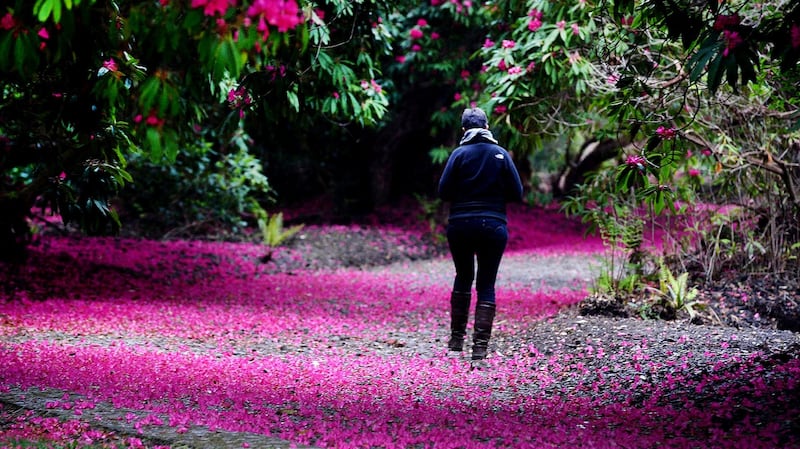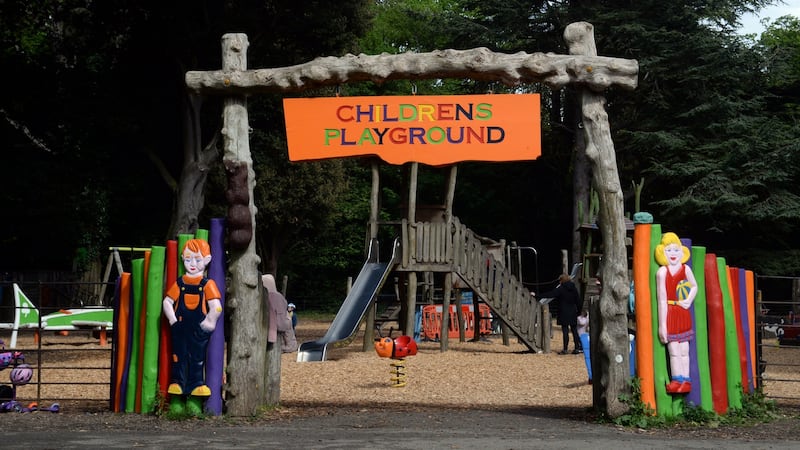Spending time outdoors is quite simply good for you. Several research papers now point to the physical and psychological benefits of being out in the fresh air – preferably away from buildings and roads.
You don’t have to drive long distances to get there – you can walk or cycle to your local park, woodland or coastal area. But, if you are away from home over the Easter holidays, seek out places that celebrate nature and run, walk or simply sit and soak up the sights and smells.
Visit a wildflower meadow
We’ve been hearing a lot recently about how wildflowers growing on road verges, field margins and gardens help pollinating insects to thrive. Many tidy town groups are now managing green spaces for wildlife and even planting wildflower meadows. Check out what’s happening in your local area.
Oxeye daisies, red clover, cowslip, meadowsweet, marsh marigold are just a sample of the colourful blooms you can savour in the spring and summer months.
And, if you’re keen to see larger wildflower meadows, head for the National Botanic Gardens at Kilmacurragh, Co Wicklow, Castletown Demense in Celbridge, Co Kildare, Brigit’s Garden in Rosscahill, Co Galway or the Airfield Estate in Dundrum, Dublin.
Anyone wishing to improve their knowledge of the most common spring flowers can check www.biodiversityireland.ie/projects/vascular-plants/

Climb a mountain
Some years ago, friends of mine set out to climb the highest mountain in each county in Ireland. And, in a little over a year, they completed their challenge. Ticknock and Three Rock Mountain in the Dublin mountains and the (big) Sugar Loaf in Co Wicklow are easy mountains close to the capital that take about an hour to reach the summit.
If you're keen for something longer and a bit more strenuous, the walk around the Upper Lake in Glendalough is spectacular on a good day. You can find online guides to most Irish mountains so choose carefully to suit the varying ability in your group, the weather conditions and terrain. Or, you can opt to join an established hillwalking group or take a guided hike (moutaintrails.ie). Outsider magazine (outsider.ie) is another useful source of information on Ireland's mountains.
Spend time in a park
City and suburban parks offer open spaces to run, walk, cycle and stroll with children or older people. Many of them also host farmers' markets and are a perfect place to bring a picnic, weather permitting. Marlay Park and St Enda's Park in Rathfarnham in Dublin, St Anne's Park in Clontarf/Raheny, Malahide Castle grounds and Ardgillan Demense in Balbriggan all offer a mixture of parkland and woodland walks and children's playgrounds. Ireland's six National Parks - Glenveagh, Co Donegal, Connemara in Co Galway, Wicklow Mountains, Burren in Co Clare and Ballycroy in Co Mayo are also worth exploring (npws.ie).

Cycle a greenway
The Great Western Greenway in Co Mayo has encouraged people of all ages back on their bikes to complete the 42km trail. The route along the old railway line from Achill Island to Westport can be completed in one day or over three stages from Achill to Mulranny, Mulranny to Newport and Newport to Westport.
First opened in 2010, it has inspired a number of other greenways around Ireland. Among these is the Waterford Greenway. This 46km off-road walking or cycling trail runs from Waterford City to Dungarvan, following the old Waterford to Mallow railway line.
Perhaps, lesser known is the Great Southern Trail, a 40km off road cycling and walking trail in West Limerick. The trail passes through Rathkeale, Ardagh, Newcastle West, Templegaltine and Abbeyfeale.
And for those up for a longer walk/cycle, the Grand and Royal canals have trails along their towpaths. The Grand Canal Way is a 117km trail that follows the towpath of the canal from Lucan Bridge to Shannon Harbour. The Royal Canal Way is a 144 km trail which passes through Dublin, Kildare, Meath and Westmeath, ending in Longford.
Both canal routes can also be completed in sections. Ordnance Survey Ireland has excellent maps to help visitors orientate themselves on all of these routes and more. See osi.ie/blog/irelands-greenways-and-trails/
Explore the treetops
Tree top adventure walks are a relatively new addition to the woodland landscape that provide outdoor fun for children and teenagers. Squirrel Scramble in the Killruddery Estate, Southern Cross Road, Bray, Co Wicklow is popular for the younger age groups while the Zipit forest adventures in Tibradden Wood, Dublin, Lough Key Forest Park, Roscommon and Farran Wood, Cork are super for older children and teenagers (see zipit.ie ). The Castlecomer Discovery Park in Co Kilkenny also has a tree-top adventure walk (discoverypark.ie)
Visit an outdoor heritage site
Consider going somewhere you’ve never been before and explore the natural landscape.
If you’re in the West of Ireland, the Ceide Fields near Ballycastle in Co Mayo offers an introduction to Neolithic farming practices. Visitors can take guided tours on pathways through the bogland to see stone-walled fields, animals pens and enclosures built over 5,000 years ago.
If you’re in Northern Ireland, visit the Castle Espie Wetland Centre on the shores of Strangford Lough near Comber, Co Down. While there, you can explore tidal lagoons, salt marshes and reed beds and see Ireland’s largest collection of native and exotic water birds and in warmer weather – get up close to butterflies, dragonflies and bats.
If you’re in the Midlands, head for Lough Boora Parklands in Co Offaly. This former cutaway bog has, in recent years, become a superb example of ecological restoration with plants, insects and birds repopulating the 2,000 hectare site. Take a self-guided walk or cycle through the area.
If you’re in the South East, consider a visit to the JFK Arboretum, just outside New Ross, Co Wexford. The arboretum has an internationally significant collection of over 4,500 different trees and shrubs. It’s a great place to develop your skills in identifying different species. Here, you can see various types of poplars, redwoods, cedars, oak, beech, sycamore, maple, pine, spruce, willow, hazel, ash and fir. And, keep an eye out for some red squirrels.
If you’re in the South, take a trip to Fota Wildlife Park in Carrigtwohill, Co Cork. A perfect place to bring children, the park has everything from cheetah cubs to monkeys, lions and penguins. Fota Wildlife Park works with conservation zoos and safari parks across Europe to ensure that these important animal species are protected.











